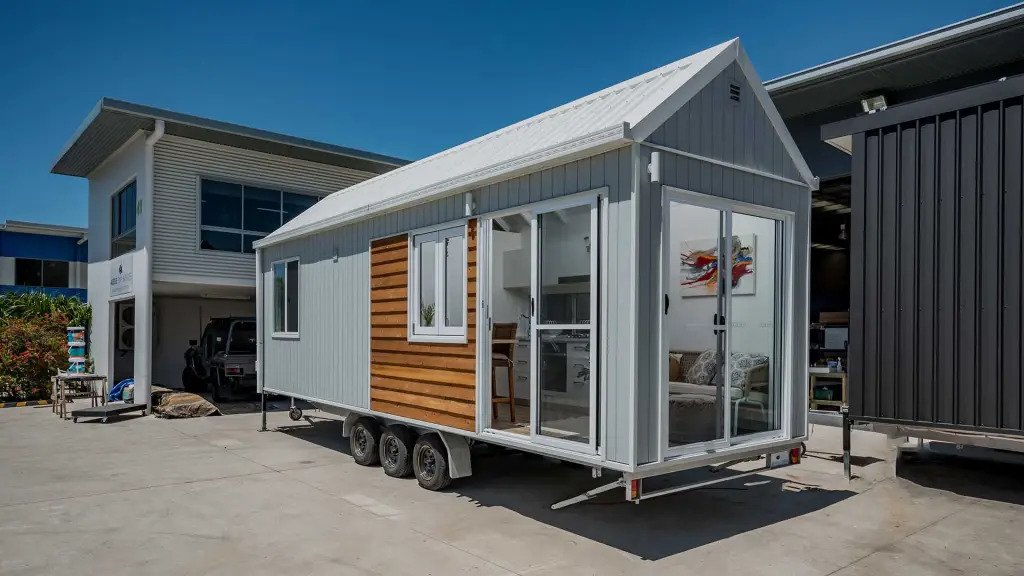Tiny Houses on wheels come with different variants of walls based on the materials used for them. It is common to group many houses into interior vs. exterior walls, and interior walls are load-bearing or non-load-bearing.
Aside from these apparent differences, when discussing walls, the primary factors are wall finishes and structural materials like framed vs. brick. This detailed guide will look at the wall categories and excellent parts/layers of all wall diagrams.
Load bearing
Contractors make the load-bearing wall with sturdy and durable materials. The materials used for these walls include beams, concrete, brick, and steel. Load-bearing walls function by holding the weight of the structure above it by sharing the load.
Retaining walls that are common in outdoor spaces can also be called load-bearing. But, instead of holding a house material up, the retaining wall holds it back.
Non-Loading Bearing Wall
When structures don’t hold up the flooring above a house, they are known as non-load. It’s typical to use these walls to divide spaces into small areas, sometimes called panel or partition walls. Since these walls’ purpose is to divide space, you need to construct them delicately with excellent materials.
You can create most panels using sheetrock and two-by-four insulation. Sometimes, there are wall partitions with terracotta, steel panels, glass, and facade bricks. These partitions are more critical to the structure of a house than other walls. That’s why they are ideal for remodeling any building.
Glass Partition Walls
Builders often refer to glass panels as walls that act as a divider. These high-quality glass walls are sound but only support some weights. The main idea behind this glass wall is space management and the ability to provide daylight penetration into the house.
Manufacturers make these glass walls with an aluminum or no frame. You can find them in the modern home, particularly places with functioning offices. It is ideal for separating offices and remote areas without interruption.
Shear Wall
Contractors construct this wall around a lift, ladder, or water pump. The pressures expected around this type of wall include water, air, and soil pressure. Because of the lateral forces exerted, this shear wall is ideal. The shear wall is excellent for protection around places with colossal pressure.
Core Wall
The Core wall is another wall category; its purpose is to hold the lateral force exerted on structures. Builders erect this wall from the foundation, which has grown high. It also works as a column on many wall surfaces. This Core wall’s purpose is to resist turbulence such as wind, earthquake, and other lateral loads. Contractors organize this type of wall-like cores. They install them at the centers of all buildings.
Precast Walls
A Precast wall is known as a finished wall and is known to be highly durable. It is cast in factories and brought to the construction site for installation. In properties where there isn’t much work or little labor, a precast wall is suitable. You can use prefab walls for tiny homes on wheels.
Parapet Walls
Install these wall types at the top of tiny houses on wheels. Their purpose is to prevent anything installed on the roof from falling off. Since most houses on wheels are always in transit, these walls help prevent loads and essentials from falling off. This parapet wall has a height of 4 feet and is highly reliable.
Curtain Walls
Design curtain walls from a steel frame, aluminum, or glass. Many people now use these trendy walls for their tiny houses on wheels. Aside from usage on small homes on wheels, you can find curtain walls in offices, hospitals, malls, startup shops, and other public structures.
Boundary Walls or Compound Walls
Contractors build these wall types to help create some kind of demarcation for buildings. They are made to be structurally adequate and are ideal partition walls. You can divide your buildings easily with this wall, and they have structural integrity.
Conclusion
Walls come in different forms, and professionals design and construct them in various facilities. Your choice depends on your tiny house on wheels, budget, taste, and what you want in your tiny home.

